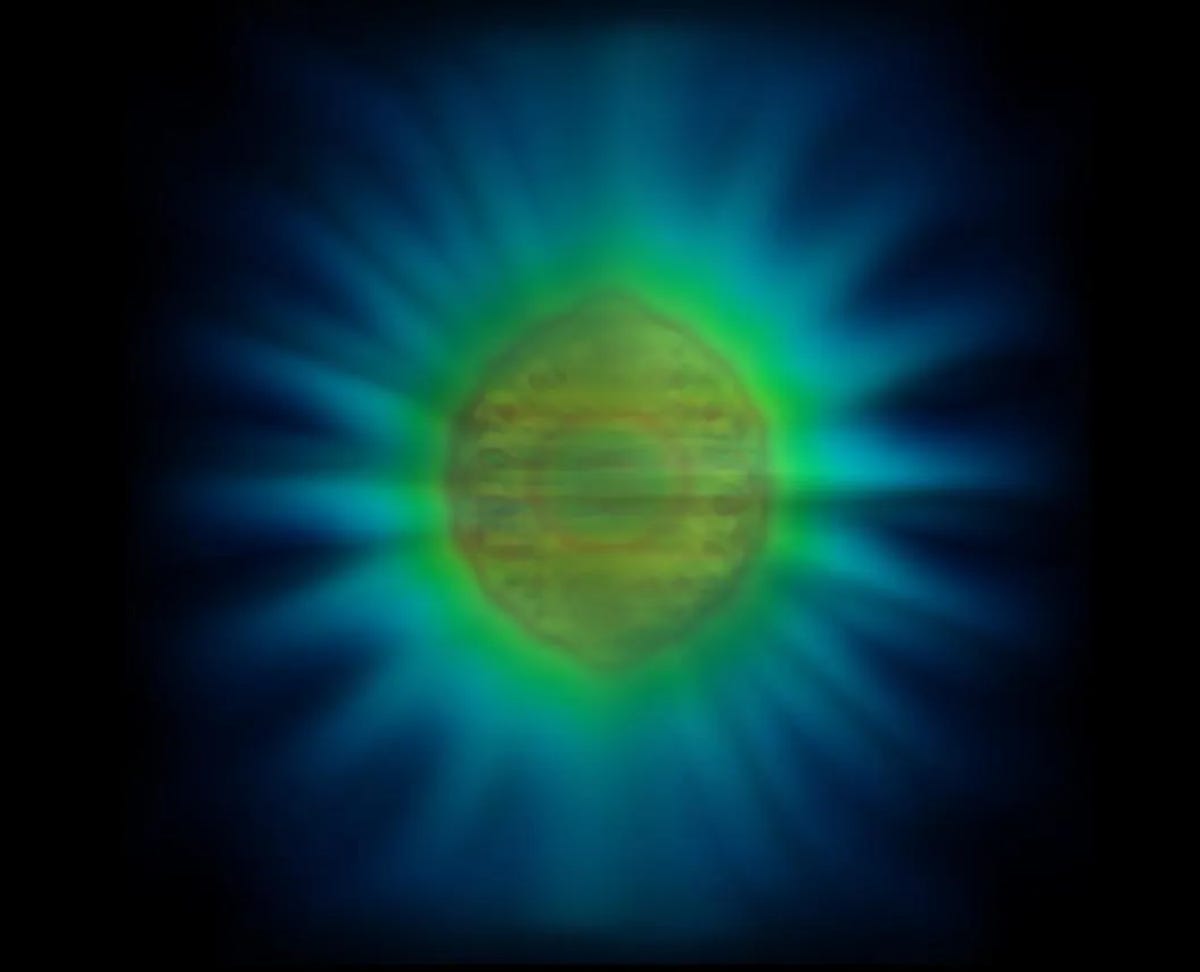Image credit: Ben Yuen and Angela Demetriadou
In an article published in mid-November in Physical Review Letters, two researchers from the School of Physics and Astronomy at the University of Birmingham described a new way to characterize the properties of a photon in a given medium, simplifying the mathematics underlying the theory.
Because the properties of photons are heavily dependent on the environment in which they propagate, the mathematics describing them is extremely complex and involves solving an enormous number of equations to obtain an answer.
The two authors found a way to simplify these calculations, and the formalism they developed made it possible to model the properties of a photon emitted from the surface of a nanoparticle (a particle with dimensions 1,000,000,000 times smaller than 1 meter), to describe its interactions with the emitting source, and to understand how the photon propagated away from the source.
Finally, it became possible, for the first time, to generate an image of a photon, which turned out to be a particle shaped like a lemon.
However, the authors emphasized that this shape is valid only for a photon generated under these specific conditions and that it changes completely in a different environment due to the photon's dual nature, as both particle and wave. Thus, the wave stretches or shrinks, bends, slows down—in other words, it takes on a different shape depending on the environment through which it propagates, much like a dancer adapting their movements and body shape to the stage and the music they are performing to.
And, as the saying goes, “when life gives you (photon)-lemons…” 😊. The formalism developed by the team of researchers from Birmingham opens up a new universe of possibilities for photon exploitation: new ways of capturing light and developing innovative photovoltaic devices, a better understanding of photosynthesis and the creation of artificial photosynthesis, quantum communication, and many other applications yet to be imagined.
